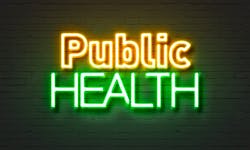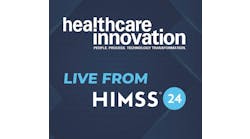When the initial Qualified Health Information Networks were announced on Feb. 13, several federal health leaders, including CDC Director Rochelle Walensky, M.D., M.P.H., highlighted the potential public health use cases for TEFCA. At the CDC-ONC Industry Day on Feb. 27, Micky Tripathi, Ph.D., national coordinator for health IT, elaborated on TEFCA as well as other efforts underway to modernize the public health data infrastructure.
Tripathi began by saying that a focus of HHS has been building cross-agency muscle, and doing everything it can to make sure that the department is more than the sum of its parts. “We at ONC are doing everything we can to be a service partner to all of our HHS partners, and there's no greater example of that than the work that we're doing with CDC,” he said. “We're trying to pull every single lever we have to be able to support the public health mission and help Dr. Walensky and the CDC team's vision of getting us to the next evolution of public health infrastructure.”
He spoke briefly about CDC’s North Star architecture, which serves as a “blueprint” to guide the decisions CDC makes around technologies and process change. “This could just be a cloud environment, right? We could go spin up multiple clouds, but if we don't have a different philosophy about the sharing of data and the use of data and the mobilization of assets, then all of that is just an infrastructure. Part of that different philosophy is about shared assets, shared infrastructure. All the things that we've been doing in the private sector, we now want to be able to bring to the public health sector. We want to be able to say that we don't have to compromise on building infrastructure at every step because of the authorities and the concerns about sharing data.”
Tripathi mentioned several ongoing efforts, including USCDI Plus for Public Health, whose goal is having better integration of public health and healthcare delivery systems, and the creation of a true nationwide public health data model. “With the CDC and other partners, we're working on a USCDI Plus for Public Health to drive toward that goal of a nationwide public health data model that we can all turn to, and it'll help us create more ‘systemness’ out of our public health system,” he said. The work involves convening public health experts to decide what are the different additional data elements that are needed. “Then how do we create a pipeline of those that can ultimately feed back into standards,” he said.
Another key effort he pointed to is the Helios project, an HL7 FHIR accelerator focused on public health. The goal is to enable FHIR-based capabilities directly in support of public health. Tripathi said Helios will work with industry partners to help advance FHIR-based capabilities.
One use case is bulk FHIR access to iOS systems. “As we know, access to immunization records was a tremendous barrier and a great source of difficulty in the past pandemic. We don't want that to be the case going forward,” he explained, “so we're working with a number of government and industry partners to say why can't we use that bulk FHIR access approach that's required in EHR systems? Take that same standards-based approach to see how that be consistent across iOS systems so that we can be able to get access to that information? “
Another use case involves healthcare delivery system capacity — situational awareness data was a big challenge and took a lot of effort during the worst of the pandemic and still takes a lot of effort, he said. “Is there a standards-based way to be able to do that? And looking at the broader set of FHIR capabilities as the kind of third area, what are the opportunities for public health?”
We need to get the public health infrastructure able to do FHIR transactions, Tripathi stressed. “That will allow us to start to think about higher-level functions, which I know is what the CDC team as well as other teams are very interested in. It is not just about being able to get data. It's about being able to do things like subscriptions, like being able to do CDS Hooks or the ability to insert knowledge back into a provider system based on processing of data or analysis of data or the CDC being able to say ‘I'm going to provide information back to the provider now so that they can actually act, with the latest and greatest information from a public health perspective in their day-to day-interactions with patients.’”
Tripathi mentioned that HHS recently had the public announcement of the first approved QHINs under TEFCA, which all committed to going live before the end of this calendar year. “We're working really hard with stakeholders with an eye towards saying let's establish the public health standard operating procedure or use case and then work with early adopters to get those early adopters live on at least one public health if not two public health use cases in 2024.”


